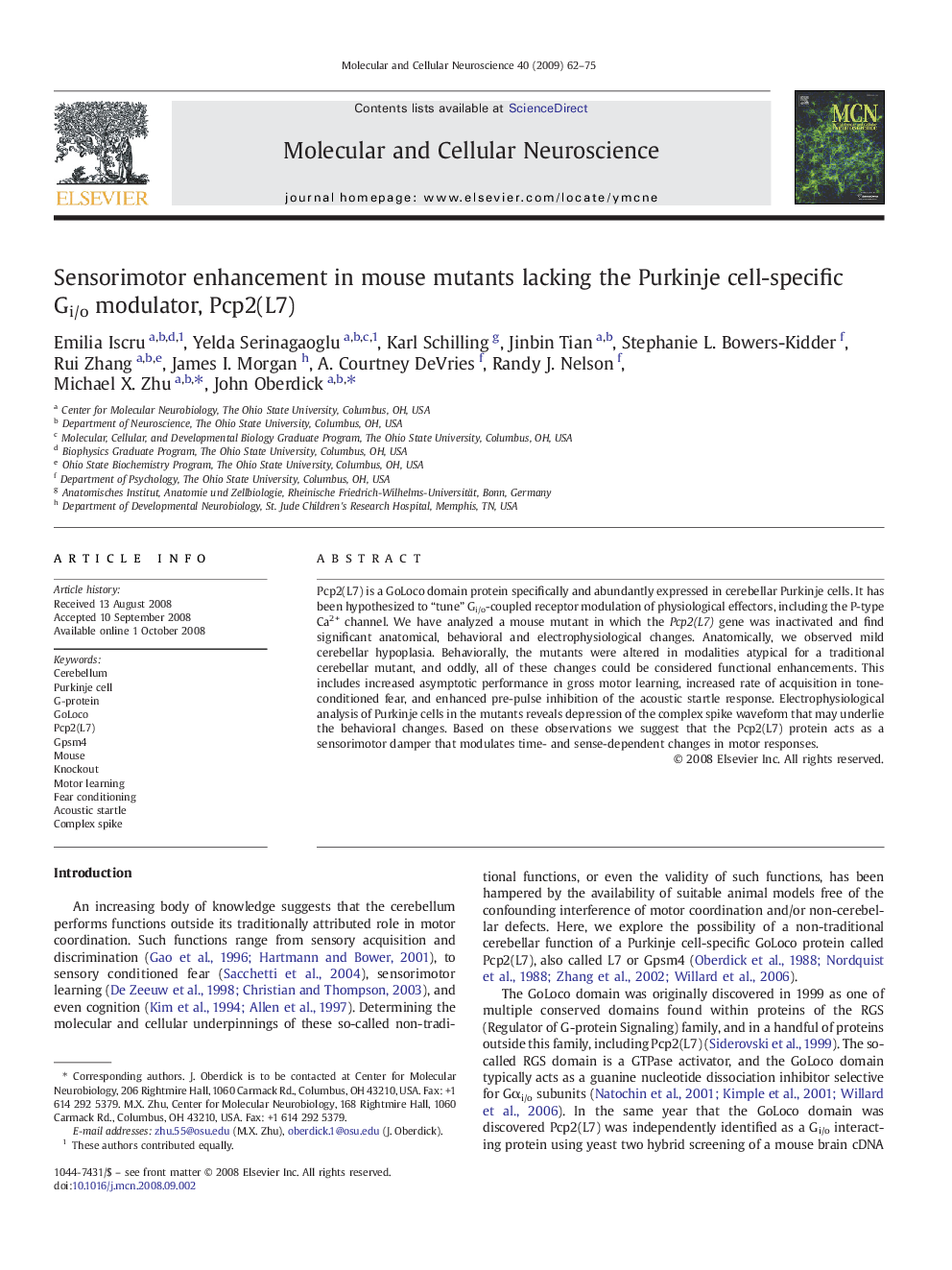| Article ID | Journal | Published Year | Pages | File Type |
|---|---|---|---|---|
| 2198954 | Molecular and Cellular Neuroscience | 2009 | 14 Pages |
Pcp2(L7) is a GoLoco domain protein specifically and abundantly expressed in cerebellar Purkinje cells. It has been hypothesized to “tune” Gi/o-coupled receptor modulation of physiological effectors, including the P-type Ca2+ channel. We have analyzed a mouse mutant in which the Pcp2(L7) gene was inactivated and find significant anatomical, behavioral and electrophysiological changes. Anatomically, we observed mild cerebellar hypoplasia. Behaviorally, the mutants were altered in modalities atypical for a traditional cerebellar mutant, and oddly, all of these changes could be considered functional enhancements. This includes increased asymptotic performance in gross motor learning, increased rate of acquisition in tone-conditioned fear, and enhanced pre-pulse inhibition of the acoustic startle response. Electrophysiological analysis of Purkinje cells in the mutants reveals depression of the complex spike waveform that may underlie the behavioral changes. Based on these observations we suggest that the Pcp2(L7) protein acts as a sensorimotor damper that modulates time- and sense-dependent changes in motor responses.
